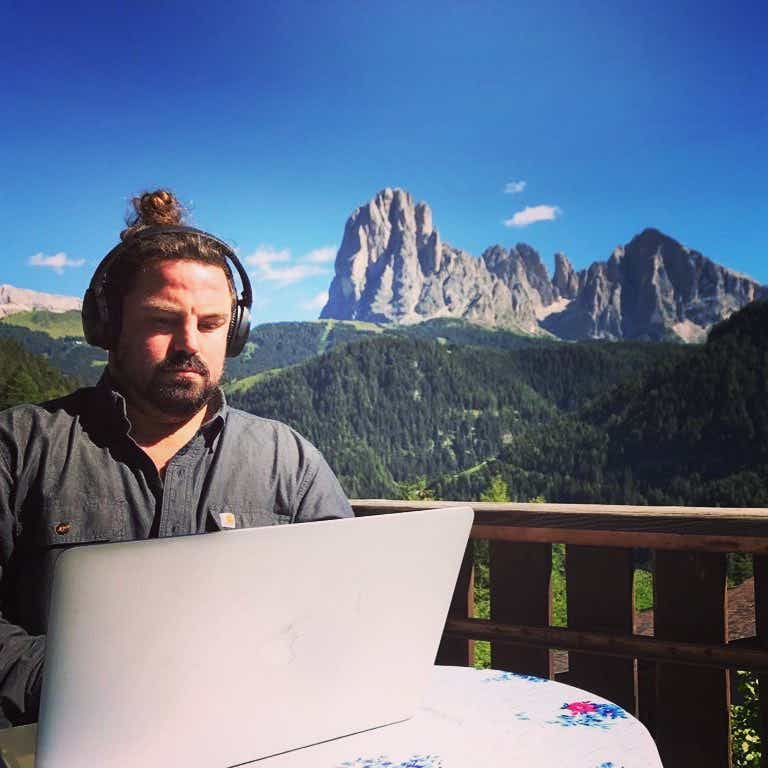Have you fantasized about quitting your job lately? What about pulling the plug on your career entirely? If you weren’t chained to your desk for the next week, the next year, the next few decades — what would you do with your time instead? And, more importantly, how would you pay for the lifestyle you dream of?
Kristy Shen and Bryce Leung made this question a central focus of their lives. The couple both worked in software engineering, where they felt stressed and burnt out, and they couldn’t picture staying on that same hamster wheel until their 60s. The last straw came when one of Shen’s colleagues collapsed at the office after three years of 14-hour shifts.
“After that, we decided, ‘You know what? I don’t want to work and die at my desk,’” Shen said. “This is not the way to live. How can we live a different way that will save our mental health and our well-being?”
So they set their lives on fire — or, rather, on FIRE. The acronym, which stands for “financial independence, retire early,” represents a movement for people who don’t want the obligation of work to dictate their decisions. Instead, they save aggressively, invest wisely, and then, once they’ve built up a sufficient nest egg, they quit their jobs forever. Shen and her husband accomplished it at 31 and 32, respectively.
“We’ve rewritten the blueprint of life, and as a result of following that path, our life has taken a complete 180,” she said.

What is FIRE?
To put it simply, financial independence is having enough money to last for the rest of your life. But it doesn’t mean having all that money at once.
The FIRE strategy uses the power of time and smart investing so that your savings grow at a faster rate than your spending. Start with a sizable sum now, and years of compound interest, dividend payouts, and gains in the stock market will continue to replenish your funds as you make conservative annual withdrawals.
To do that, you must calculate your “FIRE number.” This is the amount you’ll need to officially say sayonara to your boss. The simplest version of the formula is to add up your yearly expenses — the cost of your home, your car, food, bills, travel, everything — and multiply that by 25. That will give you enough to spend 4 percent of your net worth each year without making a substantial dent in your investments.
Shen and Leung, who detail their journey in the book Quit Like a Millionaire, decided they needed $40,000 a year. Multiplying that by 25 gave them their FIRE number: $1 million. Once they’d saved that amount, they left their jobs behind.
Of course, for many of us, $40,000 isn’t enough. Shen and Leung don’t have children, and rather than owning a home, they spend most of their time traveling. A FIRE number is an extremely personal calculation and must be tailored specifically to your own lifestyle.
How do you achieve financial independence?
Scraping together this much money doesn’t happen by accident. It takes focused, active planning, and you’ll need to make sacrifices along the way. But if you want to follow the FIRE path, “the most important number in your financial life is your savings rate,” said Grant Sabatier, the author of Financial Freedom: A Proven Path to All the Money You Will Ever Need. “The higher the percentage of your income that you’re saving, the faster you reach financial independence. It’s just simple math.”
Many members of the FIRE community save upwards of 50 percent of what they bring in, which requires frugal living and careful budgeting. Sabatier hit his FIRE number at age 30, and he admits his aggressive approach isn’t for everyone.
“My personal story is an extreme example,” he said. “Even though I was saving over 80 percent of my income, I made a lot of trade-offs that in hindsight I wouldn’t make again. I was just so obsessed with it that I actually wasn’t very happy along the way. The result was good, but I made a lot of trade-offs that I wouldn’t recommend.”

Schen and Leung say the process was less burdensome for them because FIRE hadn’t been a long-term goal. Instead, they pivoted to it when they decided their savings for a home could be used more efficiently.
“Every time we saved X amount of dollars, house prices had gone up even more. So it just felt like the goalposts kept getting moved,” Leung said. “At a certain point, our down payment fund had grown to half a million dollars. We were sitting on this pile of cash…and when we ran the math, we realized that at our current living expenses, if we keep going down the path that we’re going, we could either buy this house and then pay it off for the next 25 years, or we could retire in three.” From there, he said, the decision was “a no-brainer.”
It’s important to note that FIRE isn’t as simple as putting a lump sum into an average savings account, where interest is low. This strategy requires a portfolio of tax-advantaged accounts, like 401ks and IRAs, and investments like stocks and bonds — ideally, index funds that match the performance of the overall market, as opposed to individual stocks that can easily go bust. If this is something you want to seriously pursue, you’ve got more research to do!
If these stories sound unattainable, there’s a middle ground
“Let’s say you like your job, but it’s just too many hours, so you want to step down to part-time,” Shen said. “Or maybe you want to work twice a week instead of all five days.” In that case, you might consider “partial FIRE.”
“If you’re still getting paid $30,000 a year, and you’re spending $50,000 a year, then you only need $20,000 from your investment portfolio to cover it,” Shen explained. “There are many, many different flavors of FIRE, and there are many different ways of implementing retirement. So I think it really is about the freedom to choose.”
And hitting “FI” doesn’t mean you must “RE.” Many savers simply want the freedom to work at their own pace, on the projects they choose, with the people they hold close.
“Money only matters if it helps you live a life that you love. That’s the point,” Sabatier said. “It’s not about deferring your dreams into the future. It’s not about some pot of gold at the end. It’s about: Do you enjoy your life? Do you feel free? Do you feel creative? Do you feel like you have options?”
FIRE is all about freedom, and it’s a philosophy you can lean into as much — or as little — as you like. But chances are you’ll never regret putting away more cash than you’re saving today.
“Nothing in your life is going to change unless you start trying to change it,” Sabatier said, “so it’s important to just start taking the steps, whether it’s saving 1% more of your income or $100 extra a month, or trying to start a side hustle. The worst thing that can happen is you can go back to where you are now.”












